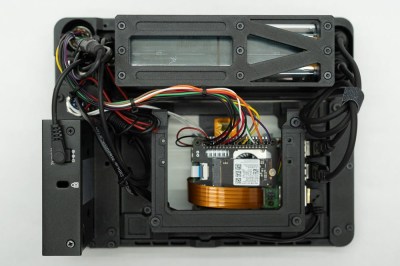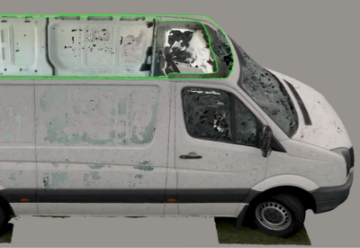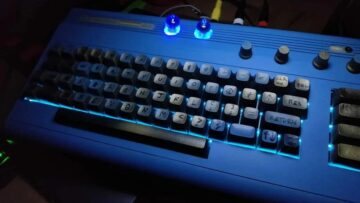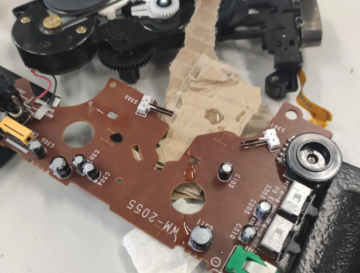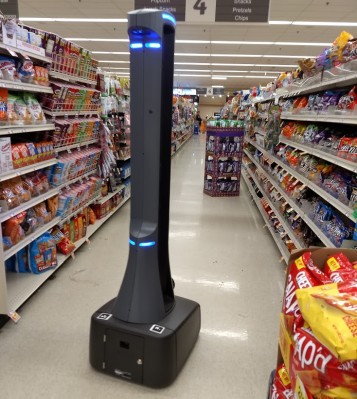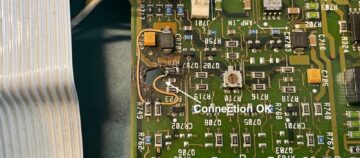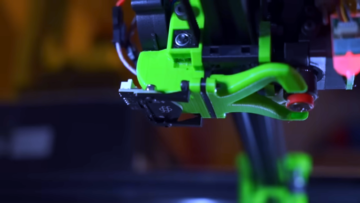At Hackaday, the projects we cover are generally a one-off sort of thing. Somebody makes something, they post it online, we share it with our audience — rinse and repeat. If a project really captures people’s imaginations, it might even inspire a copy or two, which is gratifying for everyone involved. But on the rarest of occasions, we run across a project like [Jay Doscher]’s Recovery Kit.
To say that the Recovery Kit was an inspiration to others would be putting it mildly. Revolutionary would be more like it, as it resulted in more “Pi-in-a-Pelican” builds than we could possibly count. So it’s only natural that [Jay] would return to the well and produce a second version of his heavy-duty cyberdeck.
Now, technically, there have been a few other variants of the original Recovery Kit since its release in 2019, such as the easier-to-build Quick Kit. If you want to get really technical, even the Recovery Kit is actually a do-over of sorts from his original Raspberry Pi Field Unit from 2015. But [Jay] says none of the minor refreshes or revisions he’s worked on were never substantial enough to get the official “Version 2” stamp before this one.
So, what’s changed in this new version? For one thing, it’s been optimized for reproduction by others. All the pain points that folks reported while building their own Recovery Kits have been addressed, from the time it takes to print the parts to the availability of key off-the-shelf components. Not only are the parts easier to get your hands on, but they’re also easier to assemble, with the soldered links of the original now replaced with push-on connectors.
Designed around the Raspberry Pi 5, the new Recovery Kit has also received a considerable performance boost over the previous versions. This is further extended by using a bootable NVME drive rather than the dinky SD cards most Pi builds are stuck with. Despite the computational kick in the pants, [Jay] says he’s realized that the relatively low resolutions available for the type of displays that can be crammed into a build like this are pretty poor for most graphical environments and recommends the user stick to the terminal.
In addition to the lengthy write-up about the design process behind the Recovery Kit Version Two, [Jay] has provided a comprehensive parts list with links to where you can pick up your own hardware. Having been burned by hard-to-source components in the past, this time, most of the hardware is from either Amazon or McMaster-Carr.
All in all, it’s a solid refinement of an already very well-engineered design. The only thing left now is to see if this new revision of the Recovery Kit can have the same impact on the community as its predecessor. No pressure.
- SEO Powered Content & PR Distribution. Get Amplified Today.
- PlatoData.Network Vertical Generative Ai. Empower Yourself. Access Here.
- PlatoAiStream. Web3 Intelligence. Knowledge Amplified. Access Here.
- PlatoESG. Carbon, CleanTech, Energy, Environment, Solar, Waste Management. Access Here.
- PlatoHealth. Biotech and Clinical Trials Intelligence. Access Here.
- Source: https://hackaday.com/2024/04/16/the-next-evolution-of-the-raspberry-pi-recovery-kit/
- :has
- :is
- :not
- :where
- $UP
- 1
- 167
- 2019
- 800
- a
- About
- across
- actually
- addition
- addressed
- All
- already
- also
- Amazon
- an
- and
- ARE
- around
- AS
- audience
- availability
- available
- BE
- been
- before
- behind
- boost
- build
- Building
- builds
- burned
- but
- by
- CAN
- captures
- Cards
- changed
- community
- components
- comprehensive
- computational
- connectors
- considerable
- copy
- could
- count
- cover
- Design
- design process
- Despite
- displays
- easier
- either
- enough
- environments
- Even
- everyone
- evolution
- extended
- few
- field
- For
- from
- further
- generally
- get
- Hands
- Hardware
- Have
- having
- heavy-duty
- his
- HTTPS
- if
- imaginations
- Impact
- in
- Inspiration
- inspire
- into
- involved
- IT
- ITS
- jpg
- Key
- kick
- kit
- left
- like
- links
- List
- Low
- MAKES
- max-width
- might
- minor
- more
- most
- Natural
- never
- New
- next
- no
- None
- now
- occasions
- of
- official
- on
- ONE
- online
- only
- optimized
- or
- original
- Other
- Others
- our
- over
- own
- Pain
- Pain points
- parts
- past
- people’s
- performance
- pick
- plato
- Plato Data Intelligence
- PlatoData
- points
- poor
- possibly
- Post
- predecessor
- pressure
- pretty
- previous
- process
- produce
- project
- projects
- provided
- Putting
- Quick
- Raspberry
- Raspberry Pi
- rather
- realized
- really
- received
- recommends
- recovery
- relatively
- release
- repeat
- replaced
- Reported
- reproduction
- resulted
- return
- revisions
- revolutionary
- Run
- same
- say
- says
- SD
- see
- Share
- since
- So
- solid
- something
- sort
- stamp
- Stick
- stuck
- substantial
- such
- takes
- Technical
- technically
- Terminal
- than
- that
- The
- The Projects
- their
- There.
- they
- thing
- this
- time
- to
- two
- type
- unit
- User
- using
- variants
- version
- versions
- very
- want
- was
- we
- WELL
- were
- which
- while
- with
- worked
- would
- you
- Your
- zephyrnet

